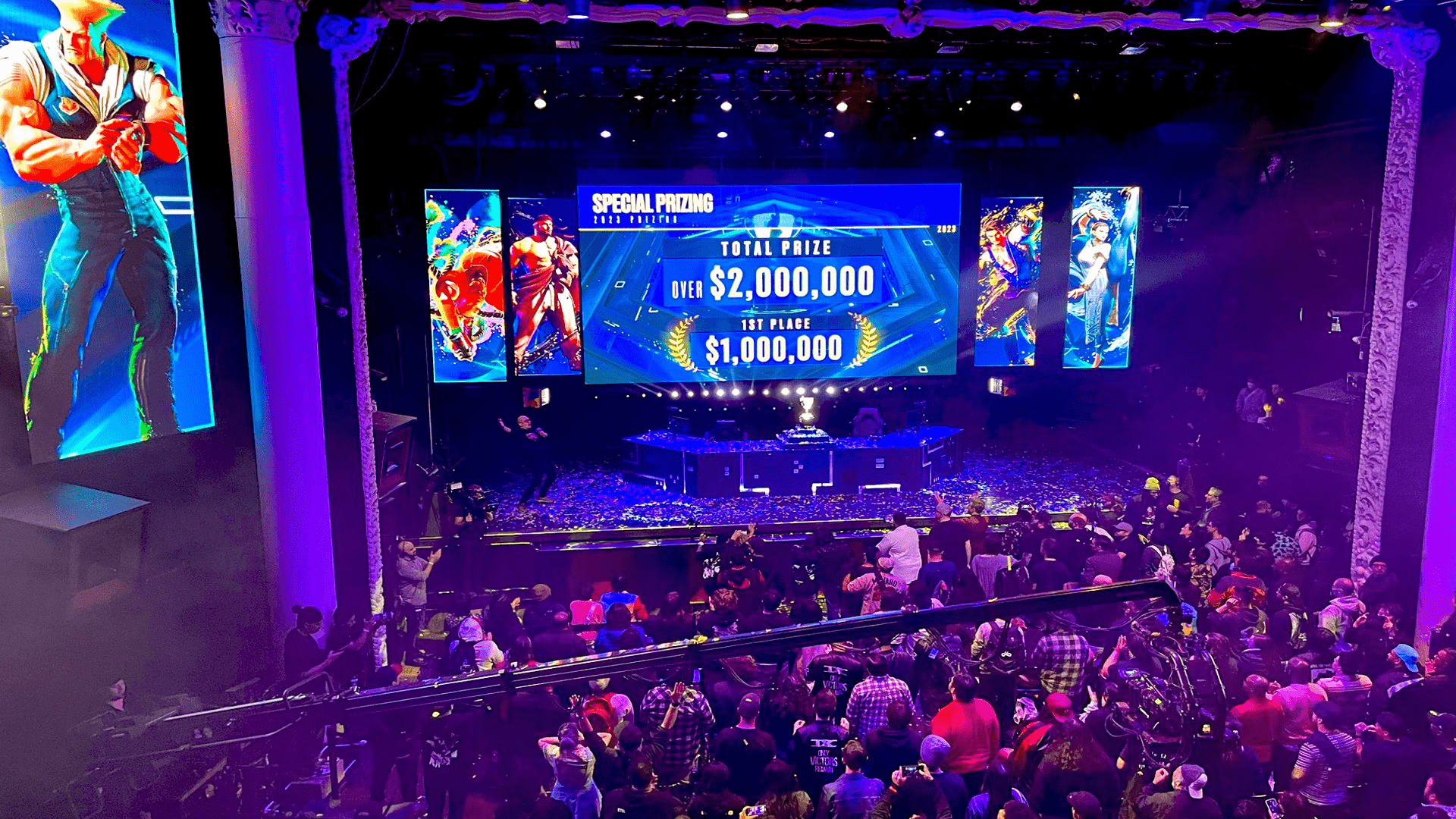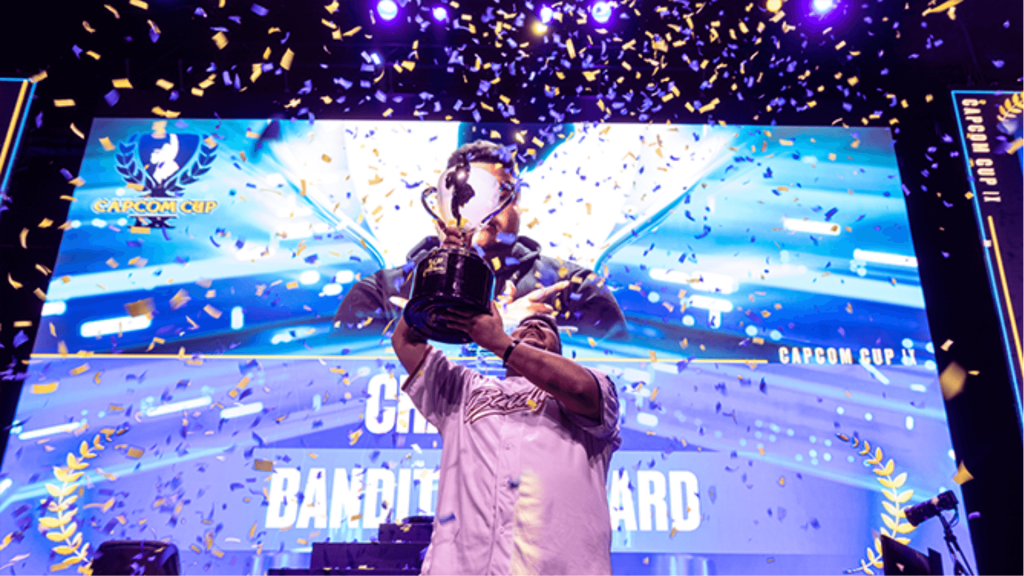DashFight contributor and FGC journalist Evgeny Kondratyev argues that the FGC shouldn’t hold its breath for esports handouts from fighting game developers.

2023 has been an awesome year for fighting games and its community. We had releases of many games, including the powerhouses Street Fighter 6 and Mortal Kombat 1, and people are pretty hyped about the imminent release of Tekken 8.
EVO was nominated for the best esports event at The Game Awards, and several FGC players were nominated for esports controller player of the year at The Esports Awards.
We have competitive circuits with hundreds of thousands of dollars on the line and increased attention from those who want to see competitive gaming but are tired of traditional esports. Everything seems to be great, right? Well, not everything is perfect. One problem the community has been complaining about is relatively low payouts in the MK1 Pro Kompetition, the competitive Mortal Kombat 1 circuit.
Developer NetherRealm Studios announced that MK1 Pro Kompetition will have a $255,000 (~£196,000) total prize pool. That includes both the final tournament and qualifiers. Qualifiers have a prize pool of $10,000 each, and while winners may receive some decent money, the fifth-place finisher, for example, will get only $350.
For players, such prize money might not even cover the expenses for the trip. Thus, people are seriously considering participation in events that are only geographically close. During one typical discussion on social media, Dominique ‘SonicFox’ McLean, one of the faces of the FGC, said: “I’m shocked NRS or WB doesn’t use the crowdfunding skins they did with MKX. MK1 legitimately could have the most paid fighting game prize pool with its players today if they went back to a formula we know works already.”
But does it really work? In this opinion lies a possible misunderstanding. While the formula of crowdfunded in-game items seemed a great option back in 2016, times have changed since then.

Times have changed
Seven years ago, esports was considered to be the next big thing. We had regularly witnessed the news of multi-million investments going towards esports clubs and tournament organisers, the Overwatch League and LCS moving to a franchise model were announced, and everyone was really hyped about the future.
One of the big things that helped esports take off was Valve’s Dota 2 Battle Pass. This concept revolutionised esports because it seemed to prove hardcore gamers were willing to pay decent money. The prize pool of The International 2014, consisting of $1.6m from Valve and 25% of battle pass sales, exceeded $10m. In 2016, that amount was doubled. That meant that the Dota 2 community spent more than $37m and $76m, respectively.
However, in the years since, it has become apparent that fans aren’t willing to spend much on esports itself. For example, in the mid-2010s, people used to think that gamers would throw all their money into their monitors to support their favourite esports scene, which turned out to be untrue.
This was proved by Valve itself: in 2023, the company released The International Compendium, which was entirely esports-focused and had zero of the valuable in-game items like Personas, Immortals or Arcanas seen in previous Passes. The International 2023 prize pool exceeded only $3.3 million, which is a far cry from the record-breaking $40 million in 2021. Now, we can safely say that most of the money raised was due to great in-game items. The amount of people spending money on esports in Dota is still significant, but relatively speaking not that big.
That led popular esports titles to basically two different monetisation models. Some developers, for example Riot Games with their League of Legends and VALORANT or Capcom with Street Fighter 6, are actively pouring money into their esports scene. Why? Because the competitive ecosystem of these games attracts and retains players, meaning it makes sense for game developers and publishers to fund esports. That’s why the winner of the Capcom Cup X in Street Fighter 6 will earn a million dollars; that’s why Riot Games pays money to teams participating in its professional leagues.

But we started this text with Mortal Kombat. What about this franchise? Mortal Kombat (MK) is a game that, honestly, is not dependent on esports. Its gory, bloody style is not family-friendly, so finding sponsors for esports broadcasts is harder. Also, Mortal Kombat always brought up the atmosphere of a party game used for entertainment, not competition. It seems that esports don’t have a great impact on the amount of units sold — people will buy MK just because it is fun to play.
And if we consider esports to have a low impact, then why should that game’s developer give a percentage of its product (in-game skins) to somebody else when they can keep 100%? It is a sad but cynical thought for those in the MK esports community. While it is totally normal for people to wish for more money in the scene, there’s not enough incentive for a publisher like Warner Bros. Games.
The rise of esports in the mid-2010s led to illusions in the minds of many community members, and misconceptions can be harmful, especially when the reality check happens. So instead of complaining, which might lead to the game developers discontinuing their esports programme due to low morale, maybe it is better to accept the situation as it is and keep working with your community.
There are many great platforms in the FGC, and people may support their favourite projects with money. Another option is to look for games where the prize money is bigger. Money talks, but unfortunately, the balance is not always on your side.
DashFight is an esports media company focused on the fighting game community (FGC). Founded three years ago, DashFight’s coverage of 15 major fighting games is read by more than four million readers yearly.
